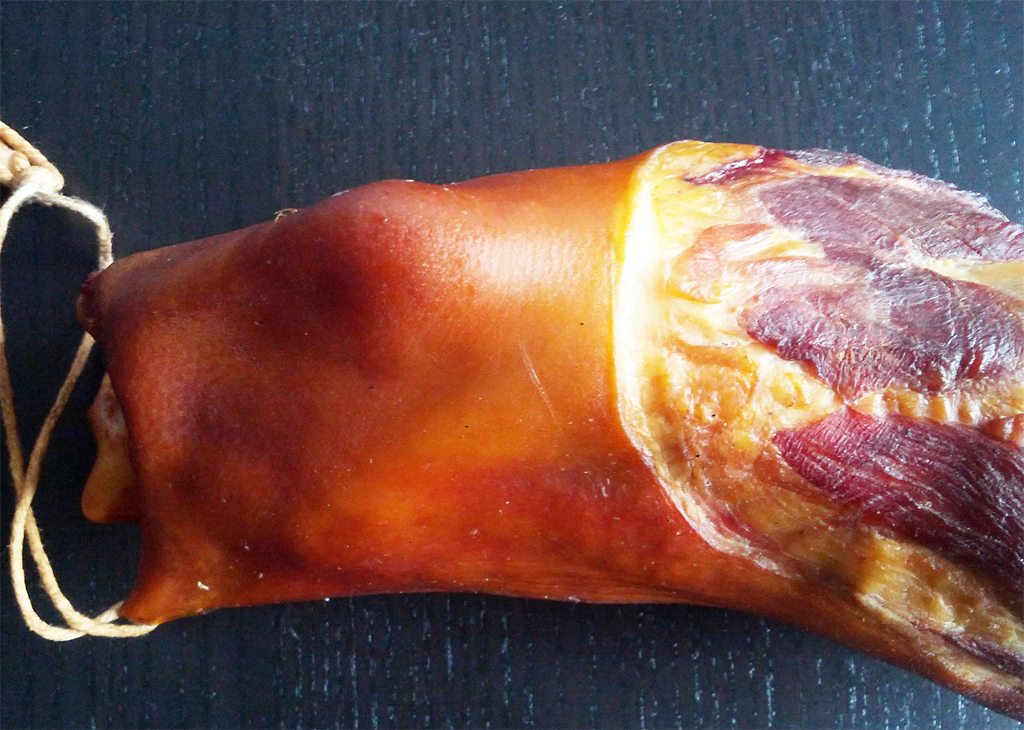I would like to think of myself as a soufflé prince (I have yet to have a flat soufflé, but the king I feel must be reserved for the likes of Messieurs Roux, Ducasse, Bocuse et al) however I have certainly fallen in to the category of toast burner, although if I ever do it these days I claim it’s in the name of food science, which of course it isn’t. Following recipes is a great way to self-teach the art of cooking, and repeatedly making the classics of French cuisine I believe will give most cooks/ chefs the armoury to go and create their own special masterpieces. However, my eyes have been opened recently to the simplified philosophy of creating great food, and it is in Nick Nairn’s book that I discovered the three basic principles behind this philosophy. In fact it seemed so simple that I thought at the time of reading that I had completely overlooked it in pursuit of perfecting existing recipes.
The first of the elements is [P]roduce. Now how simple is that. But when you think about it, it’s so true. The problem with following recipes is that unless you use them as a guide and not as an absolute, you limit yourself to what’s in a recipe and often overlook that wonderful produce out there, no matter where in the world we’re from. For example, let’s say I have seen a wonderful recipe for grilled pickled mackerel on a crispy, fresh fennel salad – which I have..mmm.. – and then head out to a fantastic fish and seafood market. All that is in my head is mackerel, no matter how scraggy looking or old it is, and as long as I find the mackerel then the recipe will work. But as I search for that mackerel I miss out on the freshly caught Morton Bay Bugs, the slimy shimmering fresh trout, banana prawns, deep pink snapper etc.. The point that Nick Nairn makes is that we should go out and select the produce based on what great produce is available, rather than stay within the constraints of a recipe. For me this was a real epiphany.
The next one is [T]echnique – you’ve got the great produce, now do something fantastic with it. Again that something fantastic need only be simple. For example, you have just found the most perfectly marbled Wagyu beef fillet – what would you do with it? Me, I would probably set it on the kitchen bench and marvel and drool – which is not really a great technique. Ok, really I would be looking to get those outer proteins really broken down (Maillard reaction) into beautiful caramelised meaty flavours, seasoned with sea salt and cracked black pepper – I certainly wouldn’t be poaching or stewing it. This is the importance of technique, and the importance of knowing (or sometimes just feeling) what to do with the great produce. I also now look at the importance of technique in the mis en place (posh way of saying food preparation) – what is the best way to whisk egg whites, how to cut vegetables into pieces of the same size, how to get the right consistency in sauces, when to sweat or caramelise onions etc..
The last one is [H]armony, and for me this is the really creative one. Choosing what complimentary and mouth shattering flavours will combine with the produce to take it to the highest level. But it’s not just limited to flavours; there are also textures to consider. Again some of the simplest harmonies are the best: chilli and mint just love each other; apple and crunch tell me about freshness; and lime and coriander always remind me of Thailand. I like watching the UK Masterchef series, and one of the common things I see is when a nest of some greenery is plonked on top of a delicately cooked game, meat or fish dish, or there are billions of different elements on a plate. Neither speaks of harmony, but more of trying to impress which ultimately it fails to do. Harmony is so important; it should be the reason that something is on a plate. Harmony will always be master to presentation.
So with my tail firmly between my legs, wandering around in a sorry state because after all these years I hadn’t realised these simple principles, I suddenly remembered an experience a few days before, and with the joy and verve of an over excited Jack-in-a-box I realised that I had just followed these principles to a tee – whoohoo. I was in the local fishmongers here in Melbourne, and staring at me was some wonderful Barramundi that had only been caught a few hours previously – its eyes were colourful and vibrant, the skin was glistening with slime (a good thing indicating freshness) and its body was firm to the touch. I bought two whole fish and on the journey home conjured up some potential dishes. Barramundi, by the way, is probably one of Australia’s greatest eating fish – that’s from a human perspective, not the fish’s. It comes mainly from the North of Australia (Queensland) and has a really earthy taste, one of which tickles my fancy. So after cleaning and filleting the fish I decided to use two of the fillets to make a tartare – I wanted something that was going to show off the fish in all its glory, and being quite impartial to raw fish I thought a tartare was the way to go. The key would be the harmony, picking complimentary flavours that would enhance the fish, but not overpower. I chose a combination of red onion, ginger, tart green apple and lime juice. The tartare was moulded in a circular stack and then fennel fronds (the aniseed complemented the dish) were placed on top of the stack. And hey presto – PTH!
Check out the recipe for Citrus Fresh Barramundi Tartare – a classic technique




